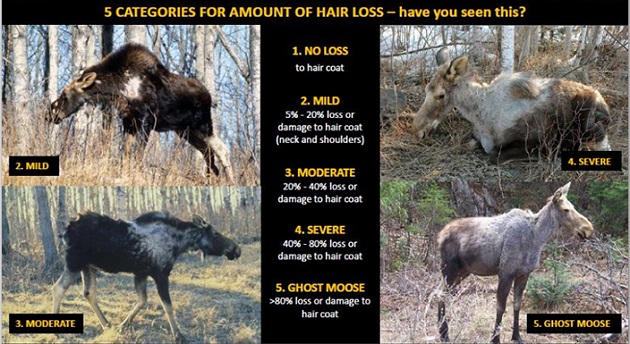Moose Tick Survey Launched
Prince George, B.C.- You are being asked to keep an eye out for moose, and if you do see one, to take note of the animal’s condition when it comes to ticks.
The Province has launched a pilot project called Moose Winter Tick Surveillance, to estimate the prevalence of the parasite.
Tick infestations can have an impact on the survival rates of moose. The results of the pilot project will help in the moose management plans in the province.
“We are hoping hundreds of back country users will help us with this survey” says Mike Bridger at UNBC, who will be compiling the data gathered.
He says it’s interesting to note that if there has been a high snowpack , the following year the infestation usually isn’t as bad. “The ticks, once gorged with moose blood, fall to the ground. If there is snow, they can’t lay their eggs, if the ground is bare, well, that’s the kind of conditions favourable for ticks.”
Typically, winter tick infestations are visible on moose during February through April as the animals scratch excessively to relieve the irritation caused by the ticks. That excessive scratching results in hair loss and less foraging. Bridger says people have been reporting tick infested moose in January this year, likely because of the mild winter we have experienced.
The degree of hair loss will give an indication of the extent of the infestation on the animal.
Folks who take part in the survey are asked to check the box that best describes the amount of hair loss they see on the animal. The survey options range from no loss to ‘ghost’ meaning the moose has lost about 80% of its winter hair.
If you are interested in contributing to the program, a copy of the survey can be found here.
Reports will be accepted until the end of April.


Comments
I’m surprised to see no comments here given the outrage over tag allocations. Understanding tick infestation is one way to increase the moose population, which makes more available for hunting.
What exactly is the correlation between a tick survey and allocation of tags for guides and resident hunters? The fact both refer to moose in the Omineca? One is to find out if ticks have a significant impact on moose populations, not whether ticks are getting a bigger share of the moose than resident hunters.
Tick infestation isn’t just a minor discomfort for moose – in can cause a significant increase in mortality. If we understand the tick situation, we can at minimum better set the appropriate harvest level and with luck help more moose to survive. And the more moose there are, the more tags there are to allocate.
Comments for this article are closed.